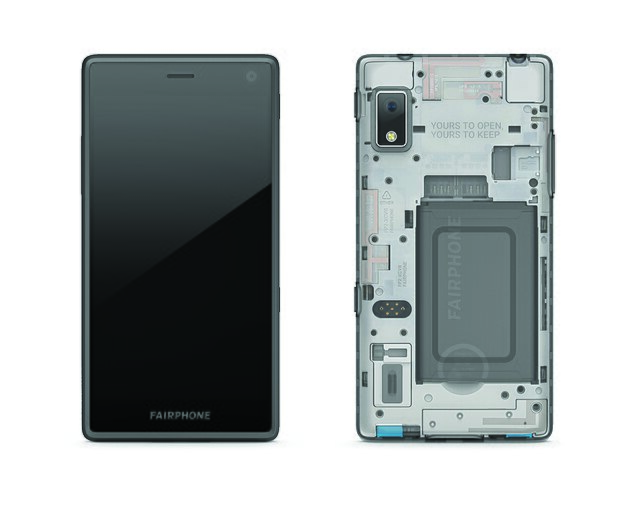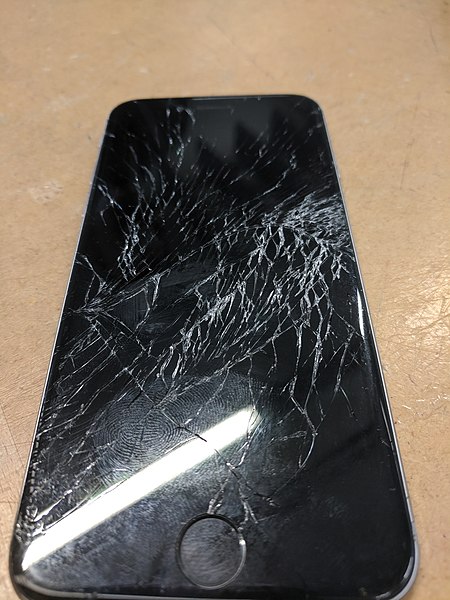A modular smartphone is a smartphone designed for users to upgrade or replace components and modules without the need for resoldering or repair services. The most important component is the main board, to which others such as cameras and batteries are attached. Components can be obtained from open-source hardware stores.
Front and back of a Fairphone 2 with a transparent case, showing the modular design. The individual components can be highlighted in the annotated image.
A diagram of the Phonebloks concept. Different sized modules were imagined as being attached to a base that served as the motherboard for the modular smartphone.
Electronic waste describes discarded electrical or electronic devices. It is also commonly known as waste electrical and electronic equipment (WEEE) or end-of-life (EOL) electronics. Used electronics which are destined for refurbishment, reuse, resale, salvage recycling through material recovery, or disposal are also considered e-waste. Informal processing of e-waste in developing countries can lead to adverse human health effects and environmental pollution. The growing consumption of electronic goods due to the Digital Revolution and innovations in science and technology, such as bitcoin, has led to a global e-waste problem and hazard. The rapid exponential increase of e-waste is due to frequent new model releases and unnecessary purchases of electrical and electronic equipment (EEE), short innovation cycles and low recycling rates, and a drop in the average life span of computers.
Defective and obsolete electronic equipment
A fragment of a discarded circuit board from a television remote
Electronic waste at Agbogbloshie, Ghana
An iPhone with a damaged screen






